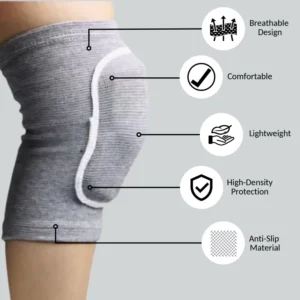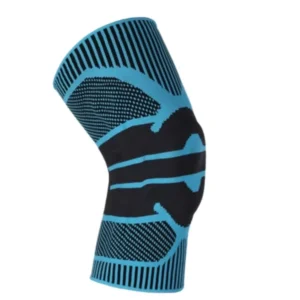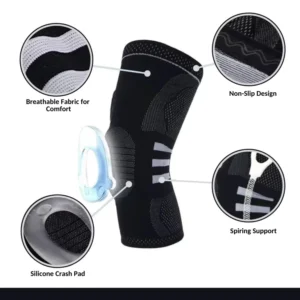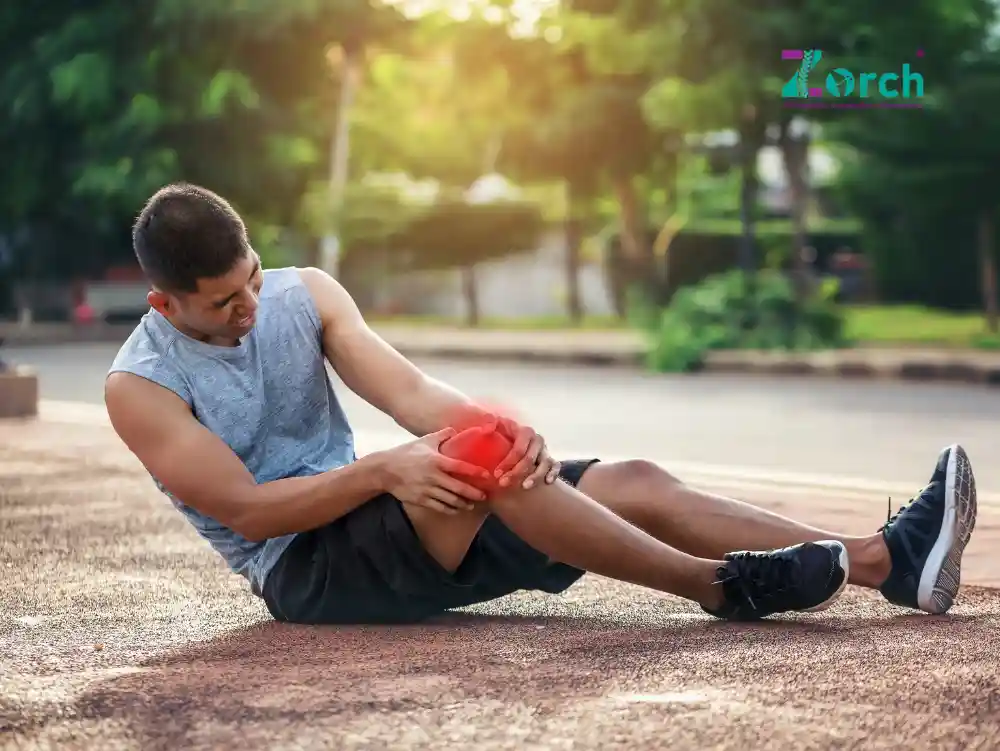Currently Empty: ₹0.00
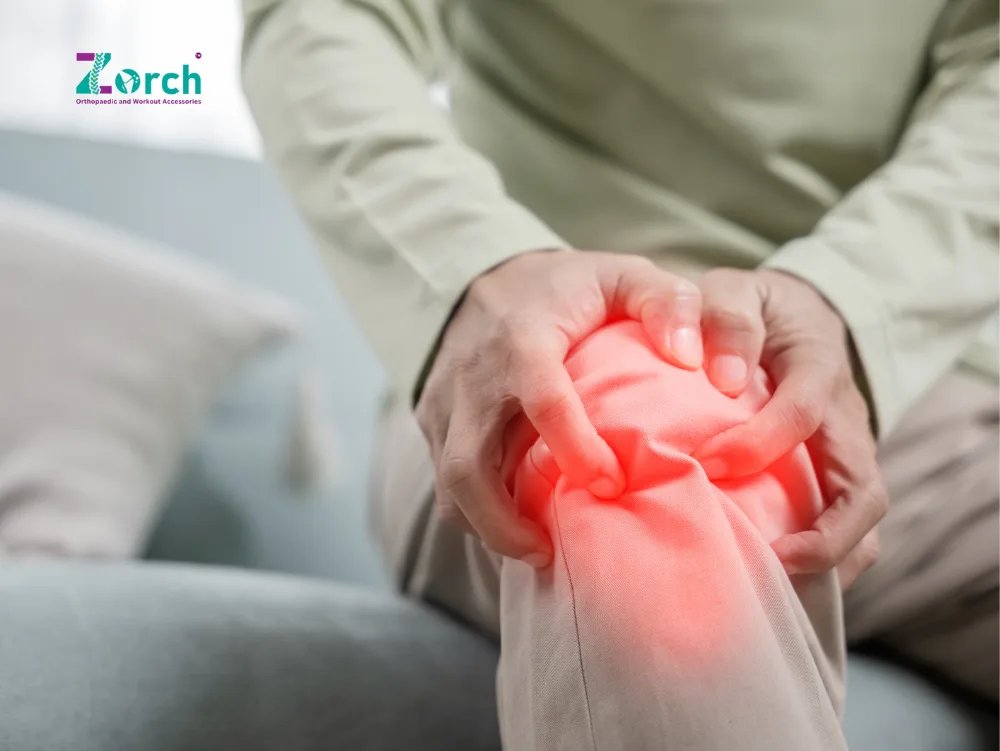
Whenever knee pain troubles you, whether you are an older adult, an athlete, or someone who goes to the gym regularly, knowing the right exercises for knee pain can make a big difference in easing discomfort and restoring strength. In this post, I will guide you through the reasons why knee pain happens, how exercises can help, safety tips, and a set of gentle but powerful exercises you can easily practise at home.
Why Knee Pain Happens in Young and Old Age
Knee pain is often seen as a problem of ageing, but it is not limited to older adults. Even young people face it. Some common reasons of knee pain in young age include overuse or repetitive stress from activities like running, jumping, or sudden pivots. Muscle imbalance, where one group of muscles is stronger and another weaker, also puts pressure on the joint. Poor biomechanics such as flat feet or incorrect walking patterns, misaligned posture, or a past injury like ligament sprains or meniscal tears can also contribute.
Although many people accept knee pain as unavoidable, research strongly suggests otherwise. According to studies, regular exercise is one of the most effective conservative methods to manage knee osteoarthritis and related pain.
Simple Safety Tips Before You Begin
Before starting any of the recommended exercises for knee pain, you must take a few precautions. Always warm up for about five to ten minutes with simple movements such as cycling, brisk walking, or marching on the spot. Never force yourself into sharp or piercing pain, mild pulling is acceptable but severe discomfort is a sign to stop. Begin with bodyweight or very light resistance, then gradually increase the effort. Keep your form correct, do not allow your knee to collapse inward or move too far forward compared to your toes. If you have swelling, a ligament tear, or severe joint injury, consult a physiotherapist before exercising. Doing these exercises three to four times a week, not every single day at the beginning, helps your body adapt better.
Warm Up and Mobility Exercises
Warming up your knees prepares the muscles and joints for activity. Here are three easy moves:
Heel Slides
Lie down, bend your knee slowly and slide your heel towards your hips, then slide it back to the original position. Perform ten to fifteen repetitions.
Seated Knee Extension
Sit on a chair, extend one leg slowly until it is almost straight, hold for two seconds, then lower it. Do ten to twelve repetitions for each leg.
Standing Hamstring Stretch
Keep one heel forward with the knee straight, then gently lean forward from your hips. Hold for twenty to thirty seconds and switch sides.
6 Strength and Stability Exercises for Knee Pain Relief
Here is a set of highly effective exercises for knee pain that strengthen and stabilise your muscles and joints.
1. Quadriceps Isometric (Quad Sets)
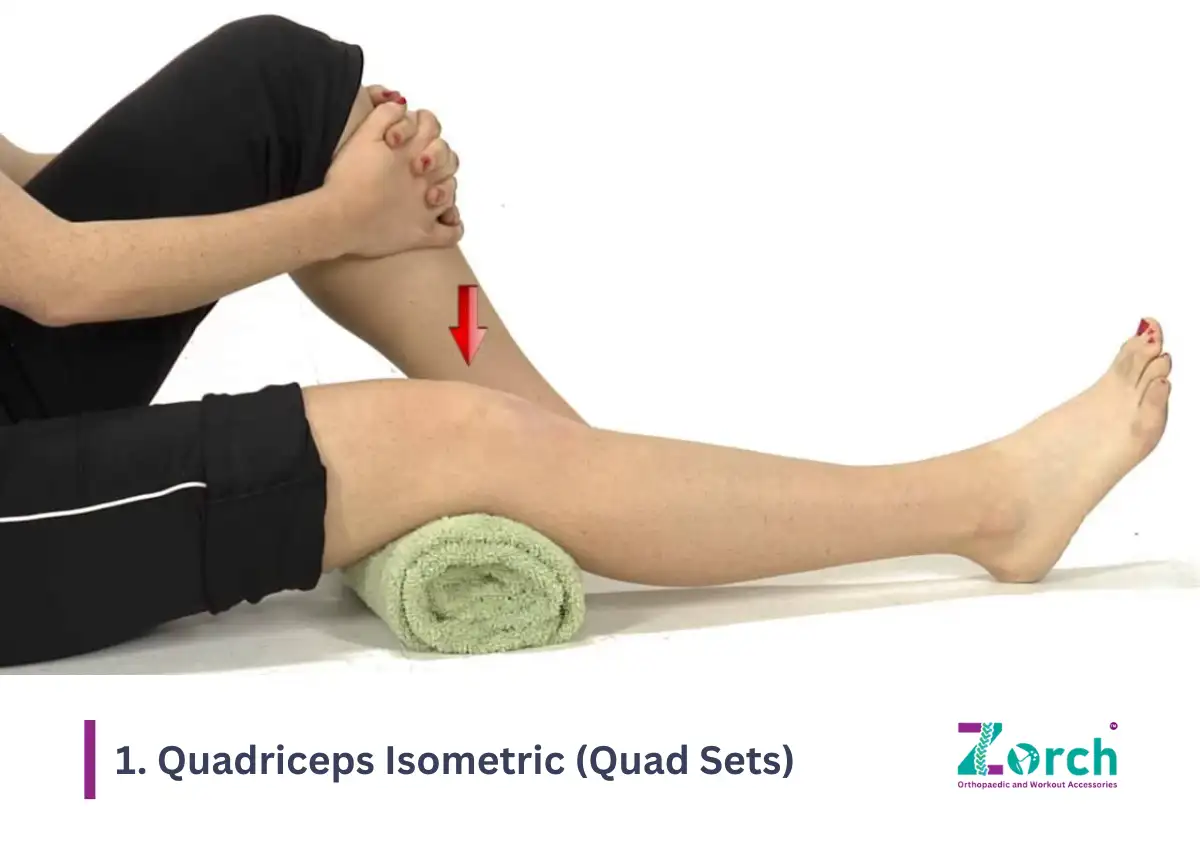
Sit or lie down with your leg straight. Tighten the thigh muscle on the front by pushing the back of your knee gently downward. Hold for about eight to ten seconds, then relax. Perform ten to fifteen repetitions for two to three sets.
2. Straight Leg Raises
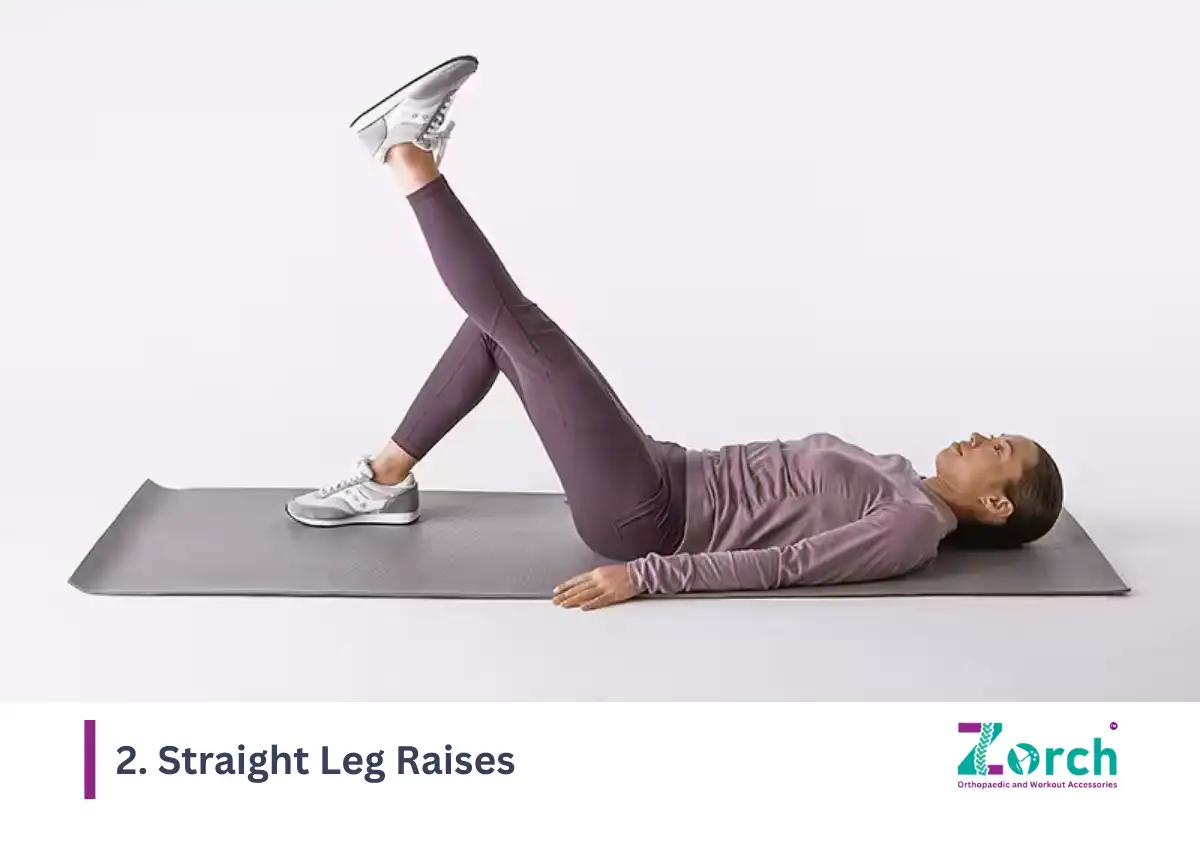
Lie on your back with one leg bent and the other straight. Tighten the thigh muscle of the straight leg and lift it about fifteen centimetres, keeping it straight. Hold for two seconds and lower it slowly. Repeat ten to fifteen times for each leg.
3. Mini Squats or Partial Squats
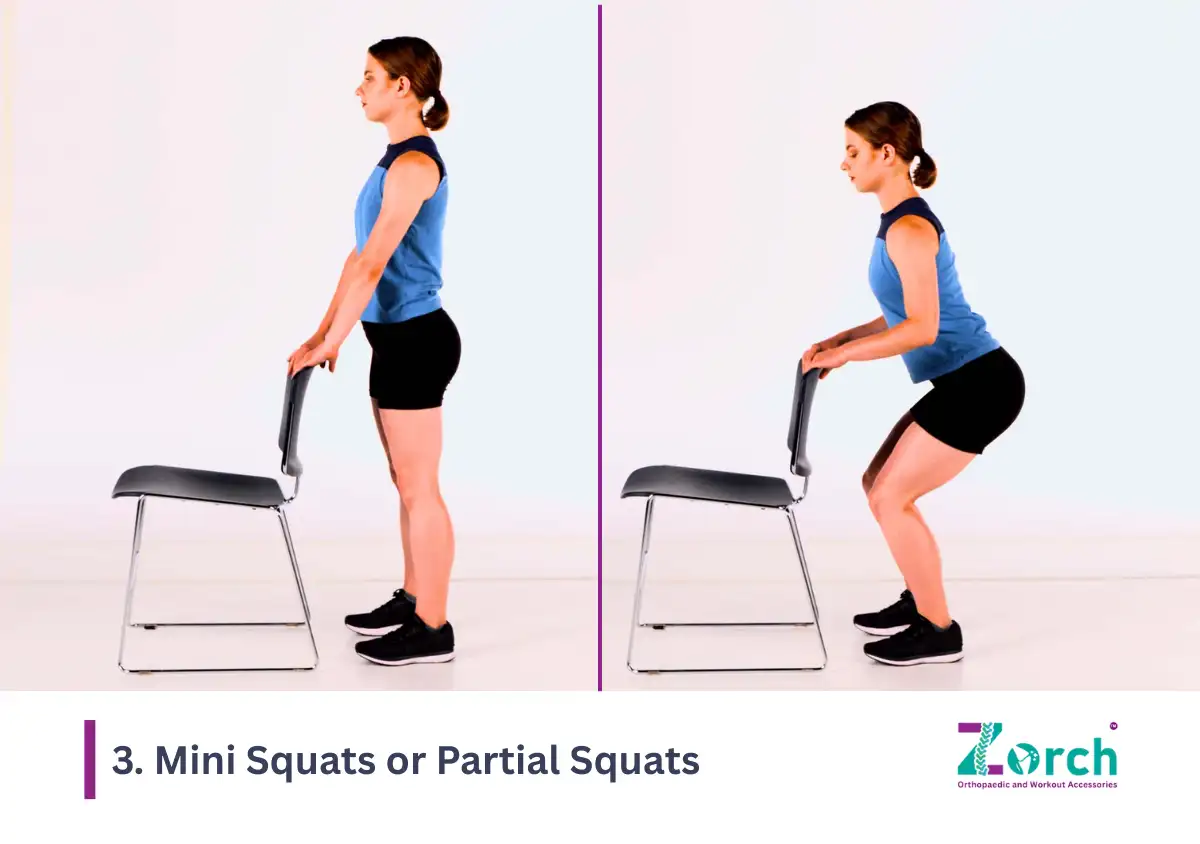
Stand with your feet at shoulder width and hold on to a chair for support. Bend your knees slightly and push your hips backward as if you are about to sit, then rise back up. Ten to fifteen repetitions for two sets are enough.
4. Static Wall Sit
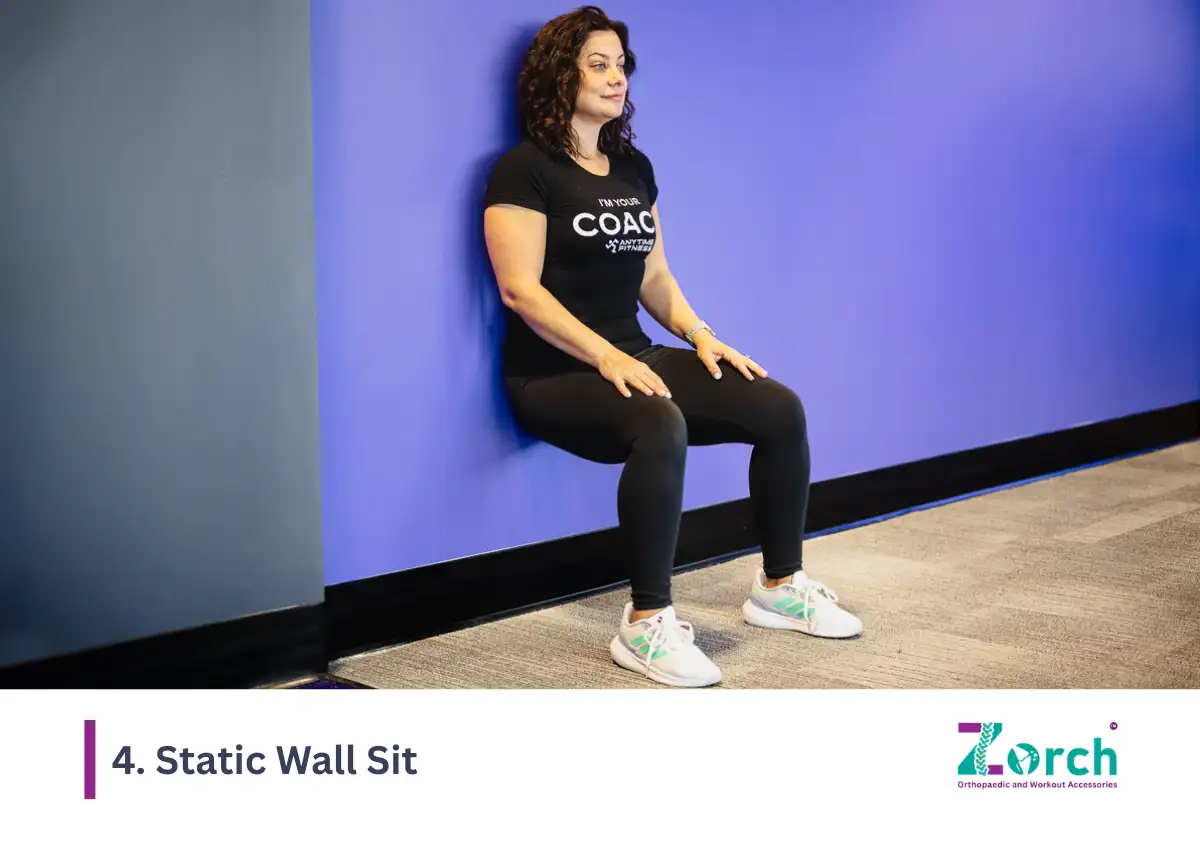
Stand against a wall and slide down until your knees are bent at about thirty to forty five degrees. Hold this position for fifteen to thirty seconds, then rise back up. Repeat three to five times.
5. Step-Ups on a Low Step
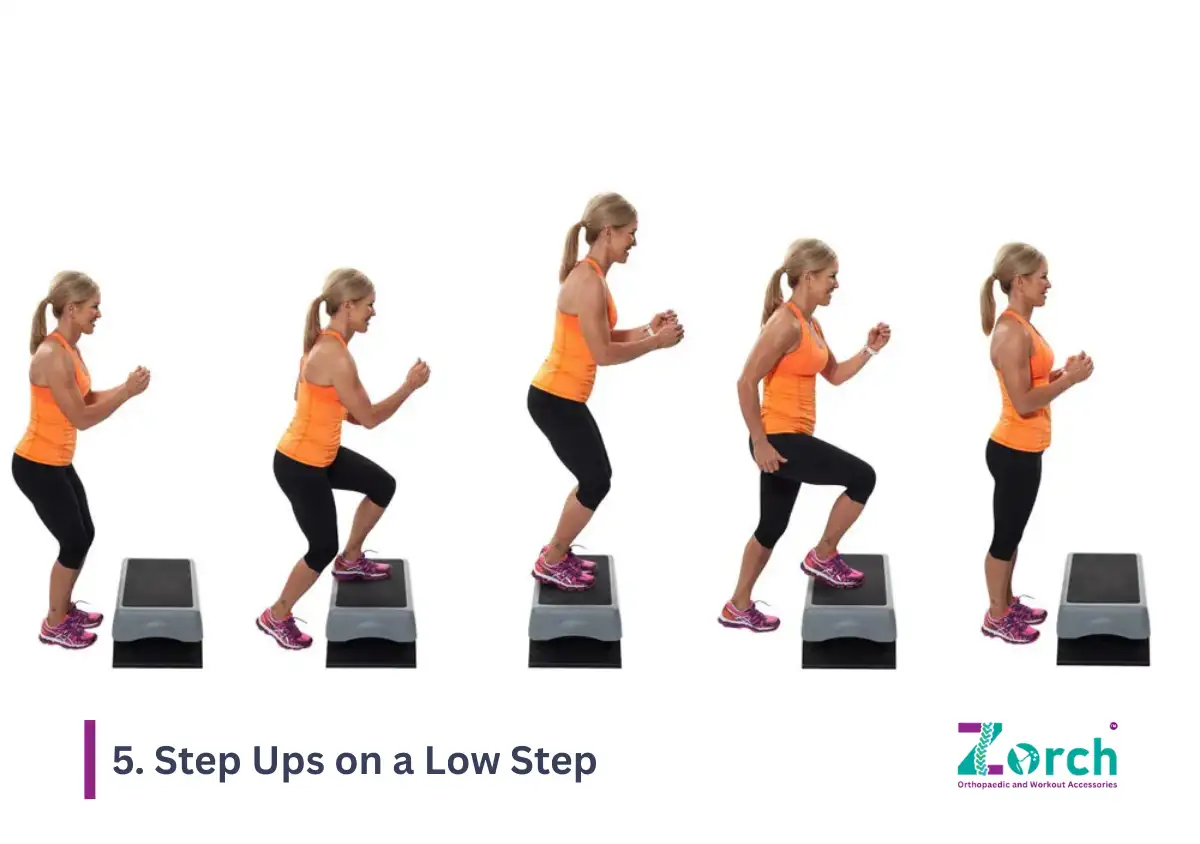
Use a step that is five to ten centimetres high. Step up with one leg fully, then step down slowly. Repeat ten times for each leg.
6. Band Resisted Knee Extensions
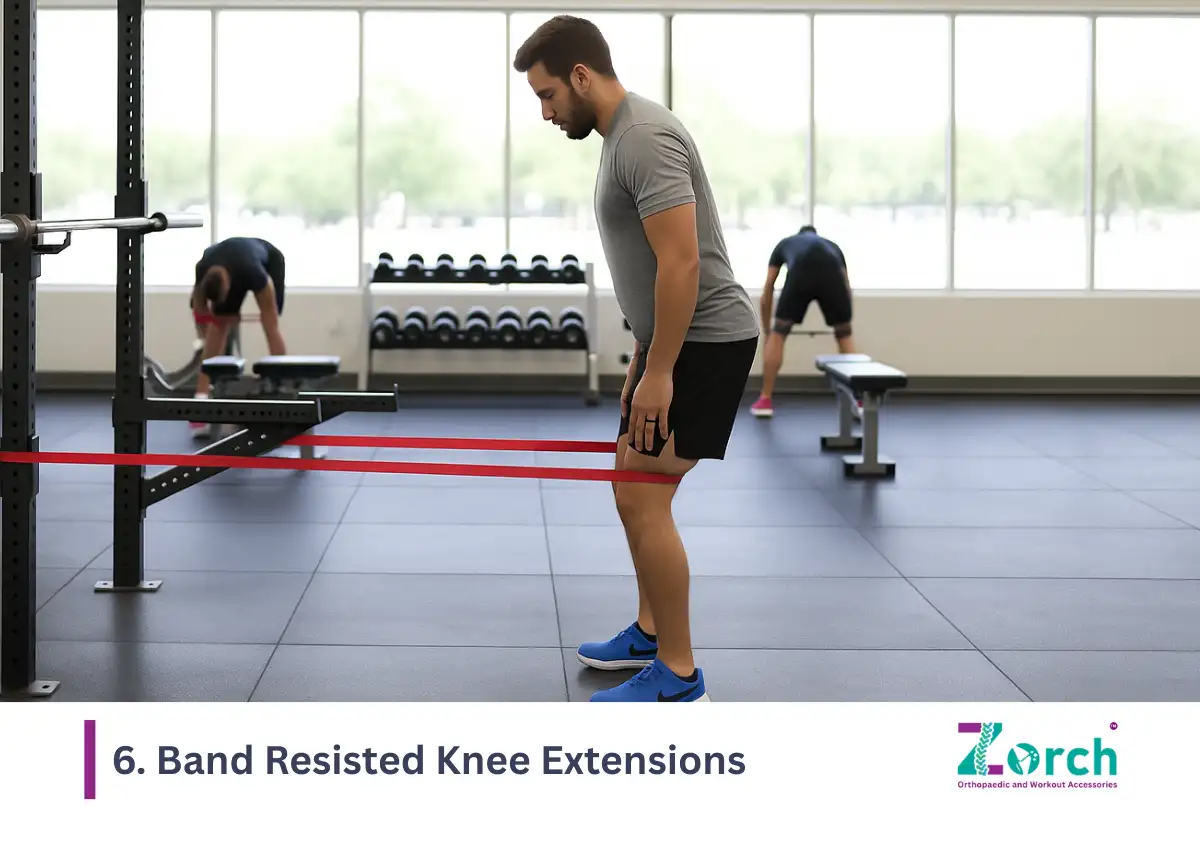
Fix a resistance band behind you at knee level. Step forward to create tension in the band, bend your knee slightly, then extend it straight against the band resistance. Perform ten to fifteen repetitions for each leg.
You may also use knee supports while doing this exercise. It helps to stabilise the joint, reduce strain, and give extra confidence while performing controlled movements.
Recommend Products
Zorch: Knee Compression Sleeve Support with Gel Pad & Side Spring Stabilizers
Zorch: Stablizers Knee Patella Gel Pad Sleeve
Zorch Elastic Compression Knee Braces
Progressing With Care
After two to three weeks, you can slowly increase repetitions, add light weights, or stronger resistance bands. If pain or swelling increases after a session, reduce the intensity or take a rest day. Remember to combine these moves with correct body posture in your daily life, since posture plays a huge role in protecting your knees. Foot support is also important. Those with flat feet benefit from shoe insoles for flat feet or Silicone Insoles for Shoes that reduce unnecessary stress on the knee. If you also struggle with heel or arch pain, your plantar fasciitis treatment plan can support your lower limb health and in turn protect your knees.
When to See a Professional
If your knee remains swollen, gets locked, or gives way frequently, or if sharp pain continues despite regular exercise, you should consult a physiotherapist. Also, if there is no improvement after six to eight weeks of consistent effort, professional guidance is needed.
FAQs About Knee Pain Relief Exercises
Are knee pain exercises safe for older adults?
Yes, they are safe if done correctly. In fact, strengthening and gentle mobility exercises are especially important for older adults because they support the joint and reduce stiffness. Always begin slowly and consult a physiotherapist if you have a major injury or severe arthritis.
How often should I do exercises for knee pain?
Most people benefit from practising three to four times a week. This allows your muscles to get stronger while also giving your body enough time to recover. If your pain increases after exercise, reduce the intensity or give yourself an extra rest day.
Can exercises alone completely cure knee pain?
Exercises help to reduce pain, improve strength, and prevent further damage, but they may not completely cure all causes of knee pain. For best results, you should also focus on maintaining correct body posture, wearing supportive footwear such as shoe insoles for flat feet or Silicone Insoles for Shoes, and following any medical advice related to conditions like arthritis or injuries.
What is the best time of day to do exercises for knee pain?
The best time is when your body feels most comfortable and when stiffness is the least. For many people, late morning or evening works well. Always warm up before starting so that your joints are prepared and less likely to feel sore.
Conclusion
Healing knee pain is not only about resting. Carefully chosen exercises for knee pain are one of the most powerful tools to reduce discomfort and improve daily function. Whether you are an older adult, a sportsperson, or a gym goer, these routines strengthen your muscles, stabilise your joints, and give you more confidence in movement. Combine these with supportive footwear such as shoe insoles for flat feet or Silicone Insoles for Shoes, maintain correct body posture, and pay attention to related conditions like foot pain by following a plantar fasciitis treatment plan. This combined strategy will bring lasting relief and protect your knees for the future.

